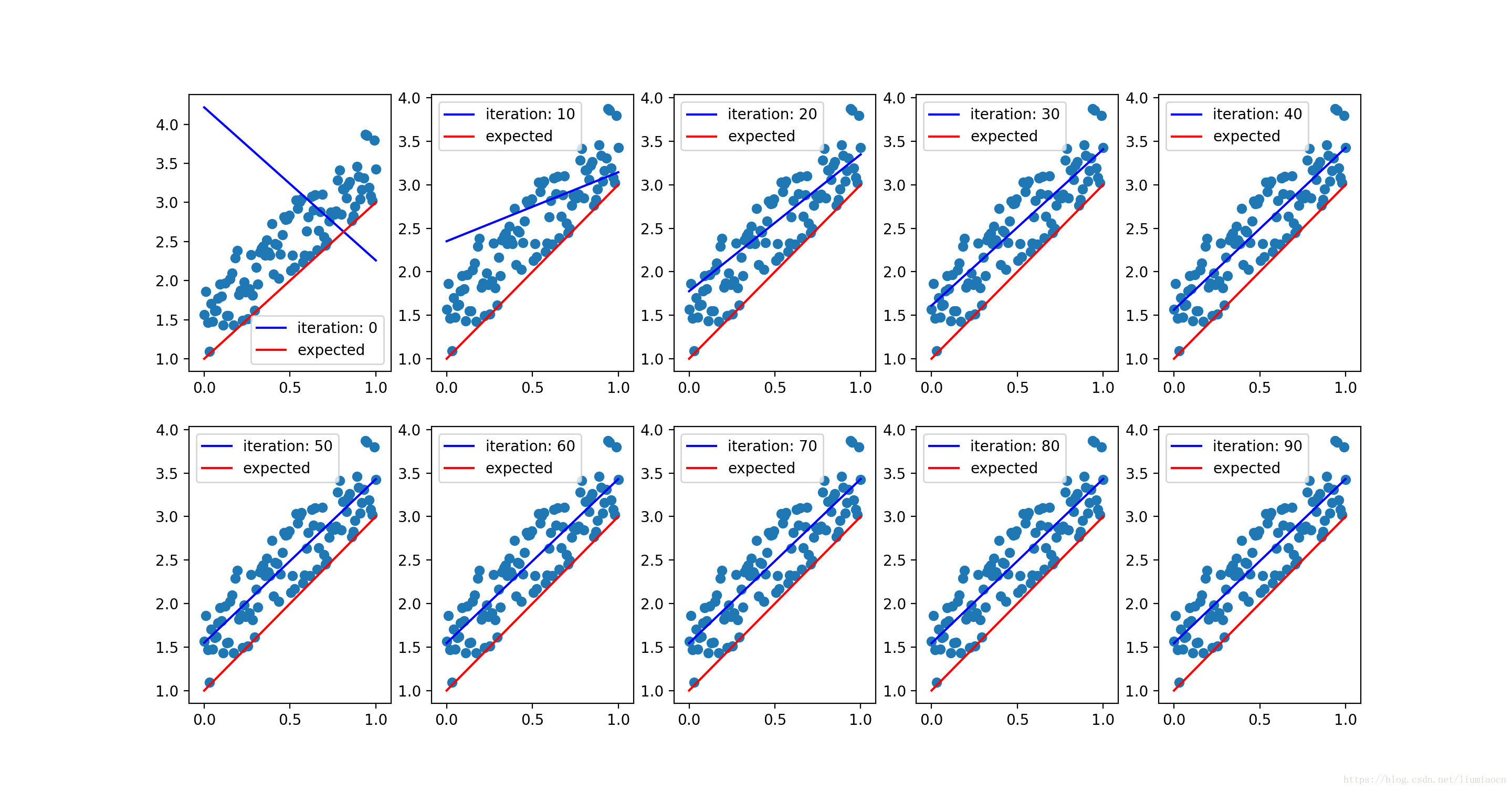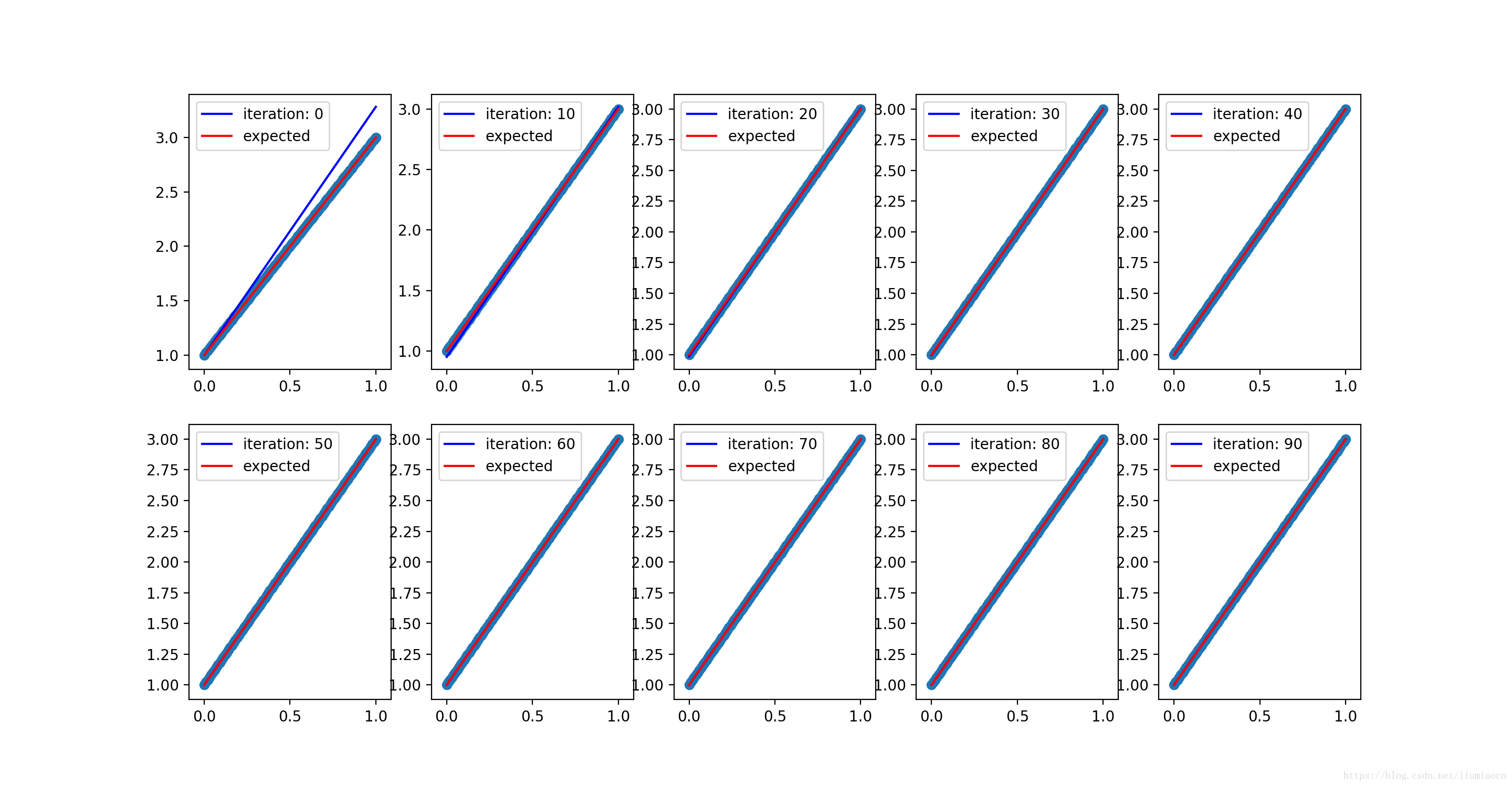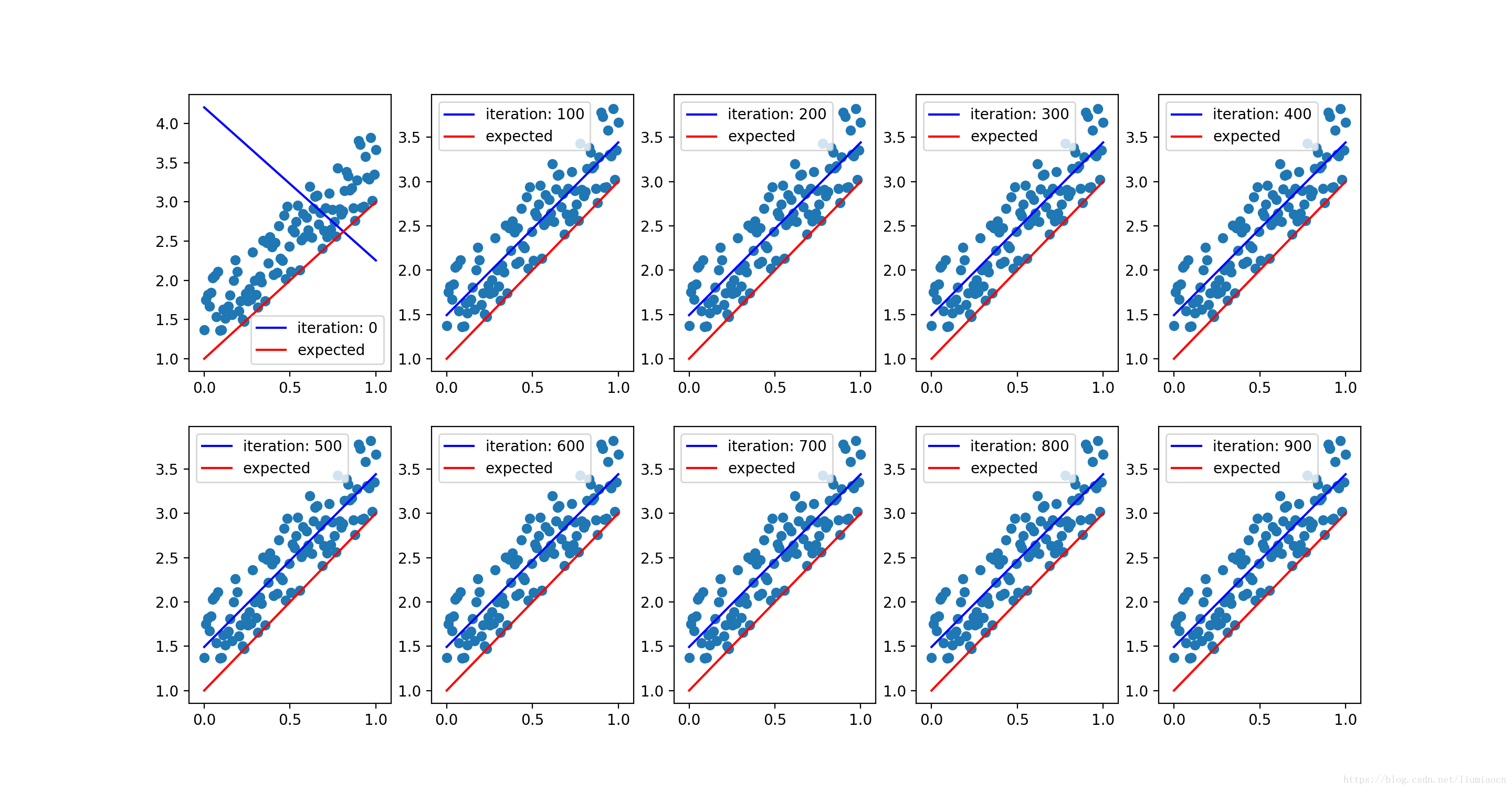
这篇文章来看一下,使用加入随机的噪声之后产生的数据进行训练,看是否能够得到期待的结果。
事前准备
训练数据使用如下方式生成:
xdata = np.linspace(0,1,100)
ydata = 2 * xdata + 1 + np.random.rand(*xdata.shape)
示例代码
liumiaocn:tensorflow liumiao$ cat basic-operation-12.py
import tensorflow as tf
import numpy as np
import os
import matplotlib.pyplot as plt
os.environ['TF_CPP_MIN_LOG_LEVEL'] = '2'
xdata = np.linspace(0,1,100)
ydata = 2 * xdata + 1 + np.random.rand(*xdata.shape)
print("init modole ...")
X = tf.placeholder("float",name="X")
Y = tf.placeholder("float",name="Y")
W = tf.Variable(-3., name="W")
B = tf.Variable(3., name="B")
linearmodel = tf.add(tf.multiply(X,W),B)
lossfunc = (tf.pow(Y - linearmodel, 2))
learningrate = 0.01
print("set Optimizer")
trainoperation = tf.train.GradientDescentOptimizer(learningrate).minimize(lossfunc)
sess = tf.Session()
init = tf.global_variables_initializer()
sess.run(init)
index = 1
print("caculation begins ...")
for j in range(100):
for i in range(100):
sess.run(trainoperation, feed_dict={X: xdata[i], Y:ydata[i]})
if j % 10 == 0:
print("j = %s index = %s" %(j,index))
plt.subplot(2,5,index)
plt.scatter(xdata,ydata)
labelinfo="iteration: " + str(j)
plt.plot(xdata,B.eval(session=sess)+W.eval(session=sess)*xdata,'b',label=labelinfo)
plt.plot(xdata,2*xdata + 1,'r',label='expected')
plt.legend()
index = index + 1
print("caculation ends ...")
print("##After Caculation: ")
print(" B: " + str(B.eval(session=sess)) + ", W : " + str(W.eval(session=sess)))
plt.show()
liumiaocn:tensorflow liumiao$
结果确认

100次迭代之后的,线性模型如下:
##After Caculation:
B: 1.46369, W : 2.0256715
没有噪声的学习过程, 收敛的如下:

可以看到对加入噪声之后的数据,收敛的过程很好,但是偏差B没有能够得到理想的结果,把迭代增加值1000次,每100次确认一下状态,得到的结果如下:

1000次迭代之后的,线性模型如下:
##After Caculation:
B: 1.4922265, W : 1.9499784
经过10倍的学习,可以看到逼近没有得到更好的一个效果,结合数据进行确认,发现生成的随机数据和实际的数据已经有了一个偏差,这种情况下只需要进行简单的纠偏即可得到更好的一个结果。
最后
以上就是矮小口红最近收集整理的关于TensorFlow入门教程:16:随机噪声下的线性回归事前准备示例代码结果确认的全部内容,更多相关TensorFlow入门教程:16:随机噪声下内容请搜索靠谱客的其他文章。
本图文内容来源于网友提供,作为学习参考使用,或来自网络收集整理,版权属于原作者所有。








发表评论 取消回复